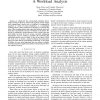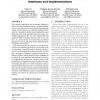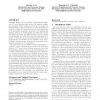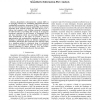182 search results - page 10 / 37 » The Secret Art of Computer Programming |
AIR
2004
13 years 7 months ago
2004
This paper reviews the current state of the art in Natural Language Processing for Hebrew, both theoretical and practical. The Hebrew language, like other Semitic languages, poses...
IISWC
2008
IEEE
14 years 1 months ago
2008
IEEE
—A whiteboard that automatically identifies drawn strokes, interprets them in context, and augments drawn images with computational results, such as solutions to mathematical eq...
SOSP
2009
ACM
14 years 4 months ago
2009
ACM
Data-intensive applications are increasingly designed to execute on large computing clusters. Grouped aggregation is a core primitive of many distributed programming models, and i...
SIGCSE
2009
ACM
14 years 2 months ago
2009
ACM
Jeannette Wing’s call for teaching Computational Thinking (CT) as a formative skill on par with reading, writing, and arithmetic places computer science in the category of basic...
CSFW
2010
IEEE
13 years 11 months ago
2010
IEEE
—Quantitative information-flow analysis (QIF) is an emerging technique for establishing information-theoretic confidentiality properties. Automation of QIF is an important step...




